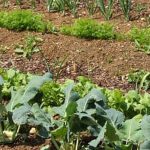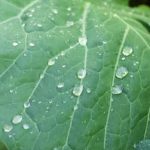Are you ready to embark on a Rocky Mountain vegetable gardening adventure? In this comprehensive guide, we will explore the unique challenges and opportunities that come with growing vegetables in the Rocky Mountain region. From understanding the specific climate and soil conditions to selecting the right vegetables and extending the growing season, this guide will equip you with all the knowledge and tips you need to have a successful vegetable garden in the Rockies.
The Rocky Mountains present a unique set of challenges for gardeners, from unpredictable weather patterns to high altitude conditions. Understanding these challenges is crucial for anyone looking to start a vegetable garden in this region. By carefully selecting the right vegetables and implementing proper soil preparation techniques, you can overcome these hurdles and enjoy a bountiful harvest.
In addition to discussing the challenges, we will also explore the exciting opportunities that come with Rocky Mountain vegetable gardening. With proper planning and care, you can take advantage of season extenders to prolong your growing season and maximize your harvest. This guide will provide valuable insights into watering, pest management, and harvesting techniques specifically tailored for the Rocky Mountain region. So roll up your sleeves and get ready to dive into the world of Rocky Mountain vegetable gardening.
Understanding the Unique Challenges of Rocky Mountain Gardening
Gardening in the Rocky Mountains presents unique challenges due to the region’s high altitude and short growing season. The cool nights, intense sunlight, and unpredictable weather can make it difficult to grow certain vegetables. However, with the right knowledge and techniques, it is possible to have a successful vegetable garden in this challenging environment.
One of the key challenges of Rocky Mountain gardening is the shorter growing season. The average frost-free period in this region is only 90 days, which means gardeners have a limited window to grow and harvest their vegetables. This requires strategic planning when it comes to selecting the right vegetables and using season extenders to maximize the growing season.
Another challenge is the intensity of sunlight at higher altitudes. Plants may struggle to adapt to the strong UV radiation, which can lead to sunburn and other issues. Providing adequate shade and protection for delicate plants is crucial in Rocky Mountain vegetable gardening.
The soil composition in the Rocky Mountains also presents challenges for vegetable gardening. Many areas have rocky or alkaline soil that may need amending in order to provide optimal growing conditions for vegetables. Additionally, water retention can be an issue at higher elevations, so proper soil preparation and watering techniques are essential for a successful garden.
- Shorter growing season
- Intense sunlight at higher altitudes
- Challenges with rocky or alkaline soil
Selecting the Right Vegetables for the Rocky Mountain Region
When it comes to selecting the right vegetables for the Rocky Mountain region, it is important to consider the unique challenges of gardening in this area. The high altitude, short growing season, and unpredictable weather can make it challenging to grow certain types of vegetables. However, with careful selection and planning, it is absolutely possible to have a successful vegetable garden in the Rocky Mountains.
Here are some vegetables that are well-suited for the Rocky Mountain region:
- Root Vegetables: Root vegetables such as carrots, beets, and potatoes tend to thrive in the cooler temperatures and well-draining soil found in the Rocky Mountains.
- Leafy Greens: Cool-season leafy greens like lettuce, spinach, and kale are excellent choices for Rocky Mountain gardens. These crops can tolerate frost and can even be grown throughout the year with proper care.
- Cold-Tolerant Crops: Other cold-tolerant crops like broccoli, cauliflower, and Brussels sprouts can also do well in the Rocky Mountains.
It is important to note that not all vegetables will thrive in this region. Warm-season crops such as tomatoes, peppers, and melons may struggle due to the short growing season and cool nights.
Therefore, it is crucial for gardeners in the Rocky Mountains to select vegetables that are well-adapted to the unique growing conditions of this area. By choosing the right vegetables, gardeners can set themselves up for a successful harvest despite the challenges of gardening at high altitudes.
Preparing the Soil for Successful Vegetable Gardening in the Rocky Mountains
When it comes to vegetable gardening in the Rocky Mountains, one of the most important factors for success is the quality of the soil. Due to the region’s unique climate and terrain, preparing the soil properly is essential for healthy plant growth and a productive harvest. In this section, we will discuss the key steps for preparing the soil to ensure successful vegetable gardening in the Rocky Mountains.
Understanding Your Soil
Before you start planting, it’s crucial to understand the composition of your soil. The rocky mountain region has diverse soil types, including clay, loam, and sandy soils. Conduct a soil test to determine its pH level and nutrient content. This will help you decide on any necessary amendments or adjustments needed to create optimal growing conditions for your vegetables.
Amending the Soil
Once you have identified the characteristics of your soil, it’s time to amend it as needed. Adding organic matter such as compost or well-rotted manure can improve soil structure, fertility, and water retention. Incorporating organic materials will also encourage beneficial microbial activity in the soil, which is crucial for nutrient uptake by plants. Additionally, consider adding specific nutrients based on your soil test results.
Protecting Soil Health
In addition to adding organic matter and nutrients, it’s important to protect the health of your soil throughout the growing season. Consider using mulch to reduce moisture loss, suppress weed growth, and regulate soil temperature. Avoid compaction by using raised beds or pathways to minimize foot traffic on planting areas. By taking these steps, you can ensure that your soil remains healthy and supportive of strong vegetable plant growth throughout the season in the rocky mountain region.
Tips for Watering and Irrigation in High Altitude Vegetable Gardens
One of the most critical factors in successful vegetable gardening in the Rocky Mountains is proper watering and irrigation. The unique challenges of high altitude gardening, such as intense sunlight, wind, and dry air, make it essential to pay careful attention to the watering needs of your vegetable plants.
Understanding Water Needs
In the Rocky Mountain region, it’s crucial to understand that the combination of high elevation and low humidity can lead to rapid evaporation of moisture from the soil. This means that vegetables will generally need more frequent watering compared to other regions. Additionally, rocky or sandy soil commonly found in this area may not hold onto moisture well, further emphasizing the importance of regular irrigation.
Choosing the Right Watering Methods
Given the specific water needs of plants in high altitude environments, selecting appropriate watering methods is key. Drip irrigation systems are highly effective for delivering water directly to the plant roots while minimizing water loss through evaporation. Mulching around vegetable plants can also help retain soil moisture and reduce water evaporation.
Conserving Water
Water conservation is essential in any garden, but it’s especially important in arid climates like the Rocky Mountains. Consider collecting rainwater for use in your garden or utilizing water-efficient irrigation techniques such as drip systems or soaker hoses.
Additionally, consider utilizing drought-tolerant vegetables in your garden to minimize overall water consumption while still enjoying a bountiful harvest. By being mindful of your watering practices and choosing appropriate methods and plants, you can ensure a successful vegetable garden in the challenging conditions of the Rocky Mountain region.
Managing Pests and Diseases in Rocky Mountain Vegetable Gardens
Pests and diseases can pose a significant challenge to vegetable gardening in the Rocky Mountains. The unique climate and high altitude of this region can create an environment that is conducive to a variety of pests and diseases that can wreak havoc on your garden if not properly managed. However, there are several strategies that gardeners can employ to protect their crops and ensure a bountiful harvest.
One important aspect of pest and disease management in Rocky Mountain vegetable gardens is selecting the right plant varieties. Look for vegetables that are resistant to common pests and diseases in the region. For example, certain varieties of tomatoes have been bred to resist common fungal infections that thrive in the cool, damp conditions often found in the Rockies.
In addition to selecting resistant plant varieties, practicing good garden sanitation can help prevent the spread of diseases. Remove any diseased plants as soon as they are detected and dispose of them away from the garden area. Keep your garden free of weeds, which can harbor pests and diseases, and clean up any plant debris at the end of the growing season to reduce overwintering sites for pests.
| Aspect | Strategy |
|---|---|
| Plant Selection | Select resistant plant varieties |
| Garden Sanitation | Remove diseased plants promptly; keep garden weed-free |
Extending the Growing Season in the Rocky Mountains With Season Extenders
One of the biggest challenges for vegetable gardening in the Rocky Mountains is the short growing season due to the high altitude and cool climate. However, with the use of season extenders, such as row covers, cold frames, and hoop houses, it is possible to lengthen the growing season and protect plants from harsh weather conditions. These tools can help you start your garden earlier in the spring and continue harvesting well into the fall, maximizing your vegetable yield.
Row covers are a simple and effective way to protect plants from frost and cold temperatures. These lightweight fabric covers allow sunlight, air, and moisture to reach the plants while providing insulation against chilly nights. Cold frames are another option for extending the growing season in the Rocky Mountains. These mini-greenhouses capture heat from the sun during the day and release it at night, creating a warmer microclimate for tender vegetables.
Hoop houses, also known as high tunnels, are larger structures that provide even greater protection and heat retention for plants. These can be used to grow a wider variety of vegetables that may not thrive in open garden beds due to the region’s challenging climate. By using these season extenders strategically throughout your garden, you can significantly increase your harvest and enjoy fresh produce for a longer period of time in the Rocky Mountain region.
Harvesting and Preserving Your Rocky Mountain Vegetable Garden Bounty
In conclusion, vegetable gardening in the Rocky Mountain region comes with its own set of challenges, but with the right knowledge and preparation, it can be a rewarding and successful endeavor. From understanding the unique climate and soil conditions to selecting the right vegetables and properly preparing the soil, there are important steps to follow for a thriving garden. Proper watering and irrigation, as well as managing pests and diseases, are also crucial for a successful harvest.
As the growing season comes to an end, it’s important to properly harvest and preserve your bounty. Whether it’s storing root vegetables for the winter or preserving excess produce through canning or freezing, there are many ways to make the most of your hard work throughout the growing season. With proper preservation techniques, you can enjoy your homegrown vegetables well into the winter months.
Furthermore, by utilizing season extenders such as cold frames or row covers, you can even lengthen your growing season in the Rocky Mountains. These tools can help protect your plants from early frosts and allow you to continue harvesting fresh produce well into the fall.
With dedication and careful attention to detail, vegetable gardening in the Rocky Mountains can be a gratifying experience that yields bountiful harvests year after year. By following this rocky mountain vegetable gardening guide, gardeners can produce vibrant gardens while also taking responsibility for their environment more consciously than before.
Frequently Asked Questions
When Should I Start a Vegetable Garden in Colorado?
In Colorado, you should start a vegetable garden in late April to early May when the danger of frost has passed. This timing allows for a longer growing season before the first fall frost.
What Are the Best Vegetables to Grow in Colorado?
The best vegetables to grow in Colorado include cold-hardy varieties like lettuce, spinach, kale, and radishes. Root vegetables such as carrots, beets, and potatoes also thrive in the cooler climate. Additionally, tomatoes and peppers can be successfully grown with proper care.
What Vegetable Grows Well in Rocky Soil?
Carrots are a great option for rocky soil as they can navigate through the obstacles and create straight roots. Their ability to push through rocky soil makes them a suitable choice for gardeners dealing with this type of terrain.

If you’re looking to get into vegetable gardening, or are just looking for some tips on how to make your current garden better, then you’ve come to the right place! My name is Ethel and I have been gardening for years. In this blog, I’m going to share with you some of my best tips on how to create a successful vegetable garden.





